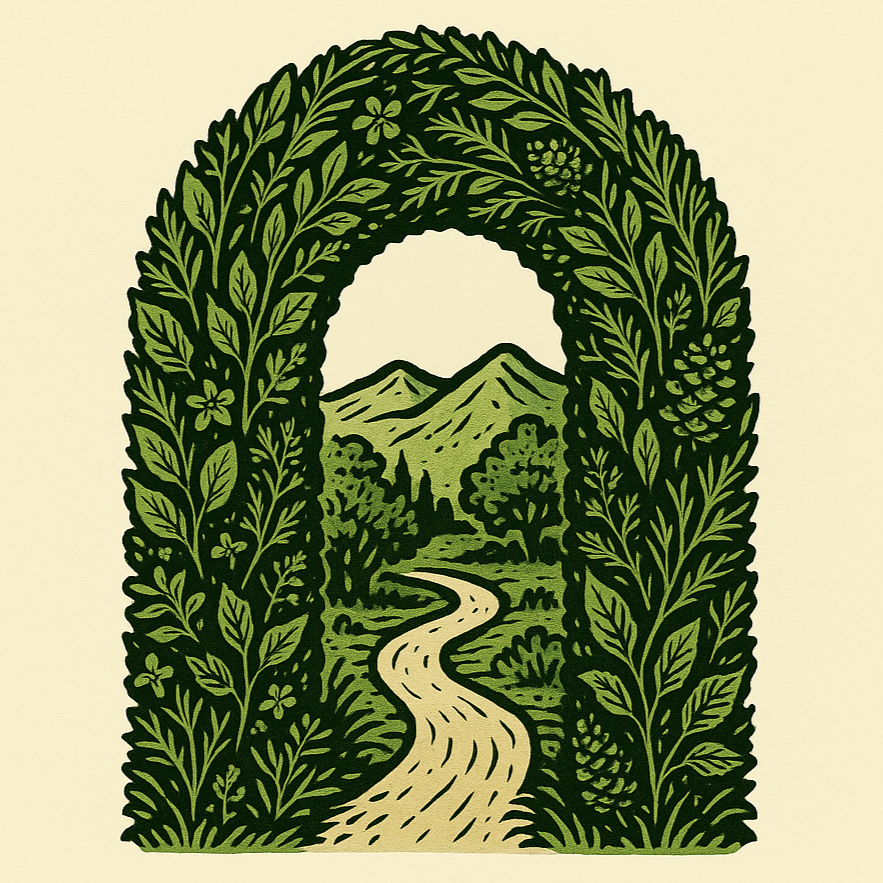Reflecting on Wild Fermentation

Wait, What Even Is Wild Fermentation?
If you’ve spent any time in DIY wellness spaces lately, you’ve likely seen a jar — usually cloudy, fizzing, and a little mysterious — being hailed as a living elixir. That’s wild fermentation: the process of letting naturally occurring microbes (on your fruit, herbs, or even in the air) transform your ingredients into something fizzy, sour, and “alive.”
For those in the know? It’s the bubbling ginger bug. The herbal kvass. The unsealed, unlabeled brew that lives on the back of your kitchen counter and smells a little... questionable.
But for those just tuning in: wild fermentation is what happens when you invite nature to run the show. You don’t add commercial cultures. You don’t sterilize much. You don’t always know what’s growing. But you let it grow anyway.
Why Some People Love It
Let’s be honest — there’s something captivating about wild fermentation, especially if you’re disillusioned with extractive, sterile approaches to health.
- It’s rebellious: Fermentation can feel like an act of resistance against pasteurization and pharmaceutical control.
- It’s empowering: You don’t need fancy gear, just time, fruit, and maybe a little sugar.
- It’s hyperlocal: You’re literally working with the microbes and materials of your bioregion.
- It’s alive: For folks fascinated by gut health, “living” drinks seem intuitive — like you’re drinking the ecosystem back into your body.
And this movement has roots. Ancestral food preservation, cultural fermentation practices, and homemade tonics have been around for millennia. This isn’t all hype - it's also the fermented wisdom of generations of humans.
But... Let’s Talk Concerns
At Verdant Way, we engage herbalism through a relational lens — and that means being honest about the limits of wild fermentation:
- Microbial roulette: Without lab control, you’re gambling on what grows. That might include spoilage yeasts, molds, or even harmful bacteria — especially when using wild-harvested herbs or unwashed fruit. For this reason, you won't see wild-fermented extracts or cordials on the Verdant Way shelf.
- Energetic chaos: Fermentation doesn’t just change the pH. It shifts the whole nature of the plant. Flavor, temperature, and medicinal action can all follow the microbial direction. In 2023, I explored the magic of fermentation by making medicinal meads, hoping that fermentation would enhance the therapeutic concentration of herbs over simple extract. The result? The herbs more often inhibited the fermentation process than improved it.
- Storage hazards: Ferments can explode if bottled too soon or stored improperly. When opening a self-carbonated ferment, it often bubbles over and leaves a mess that causes further contamination.
- Gut mismatch: Not everyone benefits from high-load microbial exposure. For people with sensitive digestion, trauma-linked gut issues, or immune compromise, “living” doesn’t always mean “healing.” There’s a difference between embracing the wild, and inviting chaos into a system already in distress.
A Note on Lacto-Fermentation
While I don't use wild fermentation in my herbal practice, I do respect fermentation as a culinary and preservation tool — especially when guided by more reliable processes.
Lacto-fermentation uses salt and anaerobic conditions to cultivate lactic acid bacteria, for example. When used for things like salsas, dips, or herbal condiments, it:
- Preserves freshness naturally
- Lowers the pH in a controlled way
- Cultivates flavor without inviting unknown wild yeasts or alcohol production
- Invites known, beneficial bacteria (lactobacillus) into the gut
It’s a different kind of wild — one with a clearer structure and a gentler microbial curve. When done properly, lacto-fermentation can be a beautiful companion to plant-based food prep.
Here's the process, briefly: Using a quart of plain, whole milk yogurt, cover a colander with cheese cloth and place over a basin or bowl. Pour the yogurt over the cheesecloth and allow to drain for 12-18 hours. At the end, you will have 2 ingredients: yogurt cheese (a versatile alternative to cream cheese) and liquid whey. The whey can be added to finished condiments and cooled soups and dishes as preservation and probiotic. I have seen salsas keep fresh for months with a little whey!
Keep in mind, this is a controlled use of a specific type of bacteria: lactobacillus. The yogurt method certainly beats buying powdered freeze dried whey, which is the primary ingredient of a lot of probiotic supplements. Add 1 tbsp liquid whey to a smoothie or beverage to make it an instant probiotic treat.
Verdant Way’s Position
I don’t use wild fermentation in Verdant Way's medicinal herbal preparations. It’s fascinating, but ultimately too complex, variable, and energetically unstable for the kind of herbal practice I'm cultivating. My work at Verdant Way supports gut health and resilience — but through a different route.
I focus on:
- Teas, infusions, extracts, and soaks that work with the body’s own rhythms.
- Tinctures that layer support gently but effectively.
- Syrups and shrubs that act as flavorful bridges between plant and person.
Ultimately, this focus respects the microbiome — using herbal support to enhance it without flooding it.
Wild fermentation isn’t bad. It’s just not neutral, and it’s definitely not necessary to create powerful, relationship-based herbal preparations. If you're seeking plant medicine that gives the body clear and effective tools to heal — know that understanding fermentation is helpful and even necessary in a micro-apothecary, but its use isn’t required.
